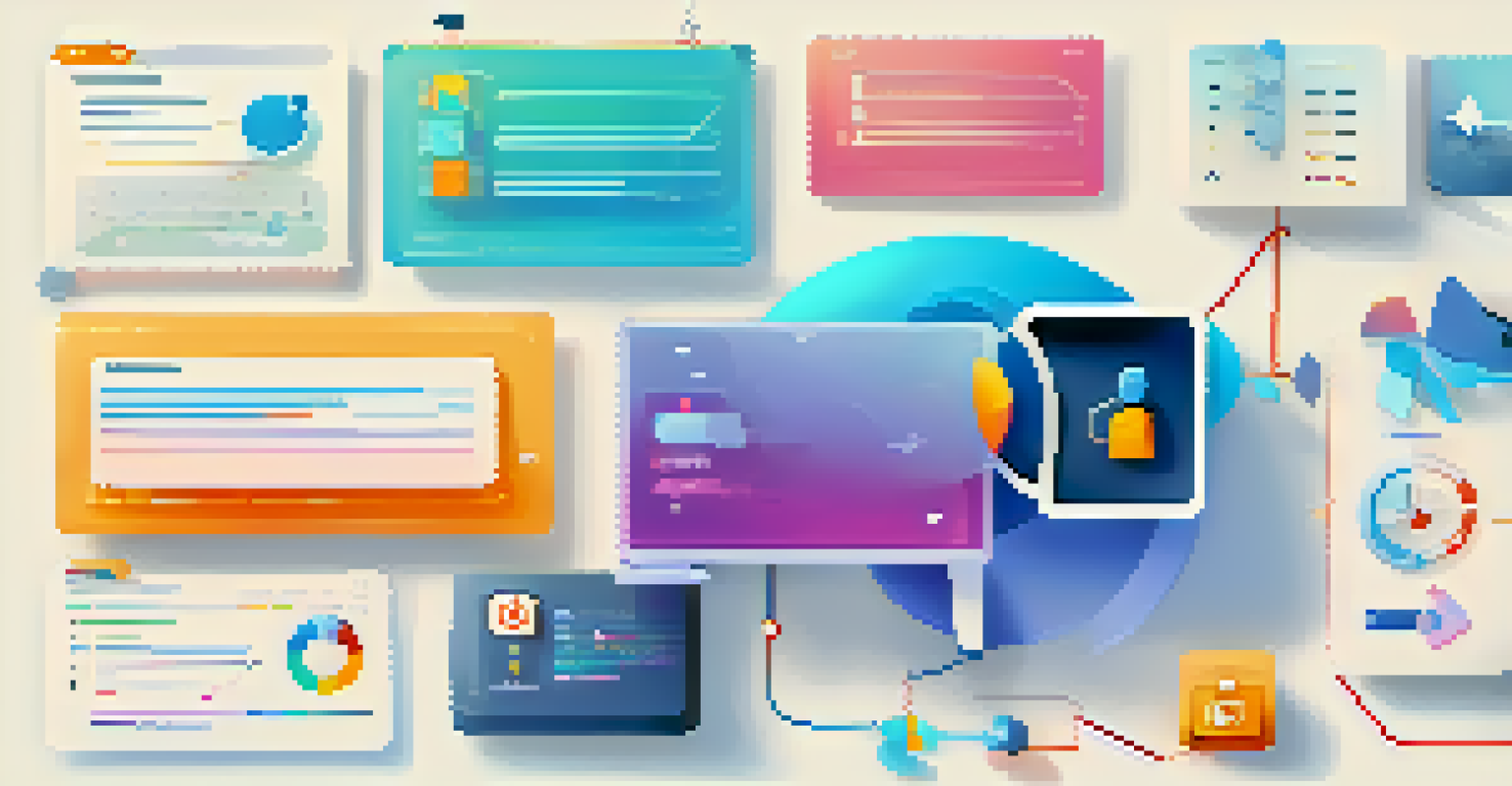SaaS for Remote Work: Tools That Enhance Productivity

Understanding SaaS: A Game Changer for Remote Work
Software as a Service, or SaaS, revolutionizes how we access and use software. Instead of installing applications on individual computers, SaaS allows users to access software over the internet. This means that updates, maintenance, and security are handled by the provider, freeing up time for teams to focus on their work.
The future of work is not about where you work, but how you work together.
For remote teams, this is particularly beneficial because it ensures that everyone has access to the same tools and information, regardless of where they are located. Think of it like having a shared workspace in the cloud, where everyone can collaborate seamlessly. This accessibility can be a game changer for productivity and teamwork.
Moreover, SaaS platforms often come with built-in collaboration features that can help bridge the gap created by physical distance. By utilizing these tools, remote teams can work more efficiently and maintain a sense of connection, which is essential for motivation and morale.
Communication Tools: Keeping Teams Connected
Effective communication is the backbone of any successful remote team. SaaS tools like Slack and Microsoft Teams provide robust platforms for messaging and video calls, ensuring that team members can communicate in real-time. This reduces the feeling of isolation that can come with remote work and fosters a culture of collaboration.

These tools also offer features like channel organization and file sharing, making it easy to keep conversations focused and relevant. Imagine having a virtual office where you can drop into different rooms (or channels) for specific discussions. This helps maintain clarity while reducing the clutter of email threads.
SaaS Enhances Remote Collaboration
SaaS tools provide remote teams with easy access to shared software, fostering collaboration and productivity.
Additionally, the integration of other SaaS applications within these communication platforms can enhance productivity further. For instance, you can easily schedule meetings, share documents, or even manage projects without leaving the app, making collaboration smooth and efficient.
Project Management: Keeping Tasks on Track
When teams are spread across different locations, staying organized can be a challenge. Project management tools like Trello and Asana offer visual ways to track project progress and deadlines. These platforms allow teams to break down projects into manageable tasks and assign responsibilities easily.
Collaboration allows us to know more than we are capable of knowing by ourselves.
Using these tools is akin to having a digital whiteboard where everyone can see what needs to be done and by whom. This transparency not only improves accountability but also helps team members prioritize their workload effectively. You no longer have to guess who’s doing what; everything is laid out clearly.
Moreover, many project management tools come with reporting features that provide insights into team performance. This data can inform future projects and help identify areas where additional support or resources may be needed, ultimately driving productivity.
Time Management: Maximizing Efficiency
In a remote work environment, time management becomes crucial. Tools like Toggl and Clockify help teams track how much time they spend on different tasks. By gaining insights into time usage, team members can identify areas for improvement and adjust their workflows accordingly.
Think of these tools as your personal productivity coaches, providing feedback on how efficiently you’re working. They can help you recognize patterns, such as time spent on meetings versus actual project work, allowing for better time allocation.
Effective Communication is Key
Communication platforms like Slack and Microsoft Teams help remote teams stay connected, reducing isolation and enhancing teamwork.
Additionally, these tools often feature reminders and reporting capabilities, which can help team members stay accountable to their schedules. This can be especially helpful in maintaining a work-life balance, as it encourages individuals to set boundaries and prioritize their time effectively.
File Sharing and Collaboration: Seamless Access to Resources
For remote teams, easy access to files is essential. SaaS solutions like Google Drive and Dropbox offer cloud storage that allows team members to store, share, and collaborate on documents in real time. No more sending files back and forth via email; everything is accessible from anywhere with an internet connection.
This collaborative environment resembles a digital filing cabinet where everyone has access to the same documents, ensuring that no one is left out of the loop. Changes can be made simultaneously, fostering teamwork and reducing the risk of version control issues.
Moreover, these platforms often include comment features that facilitate feedback and discussion right within the document. This means that team members can collaborate more effectively, making it easier to brainstorm ideas or refine projects without endless email chains.
Security and Compliance: Protecting Your Data
With the rise of remote work, data security has become a top priority for businesses. SaaS providers often implement robust security measures, including encryption and two-factor authentication, to protect sensitive information. This can give remote teams peace of mind when accessing and sharing files online.
Consider these security features as a digital lock and key, ensuring that only authorized team members can access critical data. This is especially important for industries that handle sensitive information, as it helps maintain compliance with regulations and standards.
Integration Boosts Workflow Efficiency
Integrating various SaaS tools creates a seamless workflow, streamlining processes and saving time for remote teams.
Additionally, many SaaS tools offer audit logs and reporting features that allow organizations to monitor access and changes to their data. This transparency not only enhances security but also provides valuable insights into how data is being used within the team.
Integrating Tools: Creating a Cohesive Workflow
One of the biggest advantages of SaaS tools is their ability to integrate with one another. By connecting various platforms, teams can create a seamless workflow that enhances productivity. For instance, you can integrate your project management tool with your communication platform, allowing for automatic updates and notifications.
This integration is like having a well-oiled machine where all parts work together efficiently. It eliminates the need for repetitive tasks, such as manually updating project statuses in multiple places, saving time and reducing errors.

Moreover, many SaaS tools offer APIs (Application Programming Interfaces) that allow organizations to customize their workflows further. This flexibility means that remote teams can tailor their tech stack to meet their specific needs, ensuring that they have the right tools for their unique challenges.
Conclusion: Embracing SaaS for Enhanced Remote Productivity
In conclusion, adopting SaaS tools for remote work can significantly enhance productivity and collaboration among teams. From communication and project management to file sharing and security, these tools offer solutions tailored to the needs of modern remote teams. By leveraging the right SaaS applications, businesses can create a cohesive and efficient work environment.
As remote work continues to grow in popularity, understanding how to utilize these tools effectively will be essential for staying competitive. Investing time in training and integrating these platforms can yield long-term benefits, improving not just productivity but also team morale.
Ultimately, embracing SaaS for remote work is about finding the right balance of tools that work for your team. By prioritizing collaboration, organization, and security, remote teams can thrive and achieve their goals, no matter where they are located.